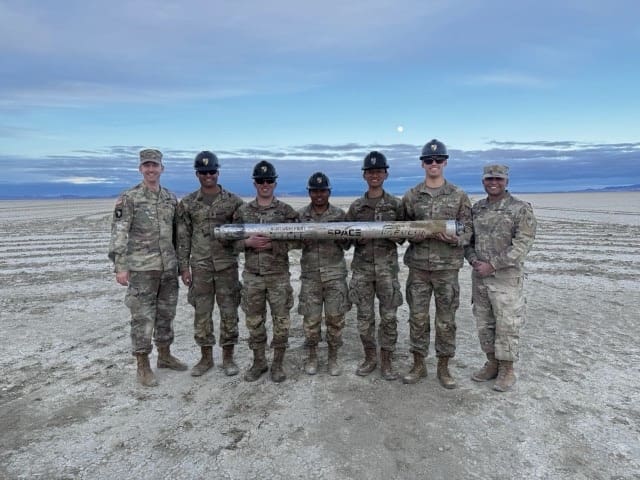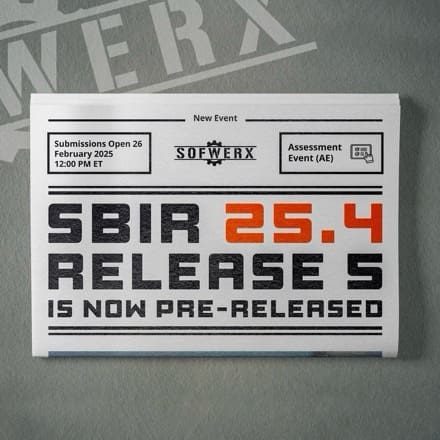ABERDEEN PROVING GROUND, Md. (May 6, 2025) — Soldiers deploying in a wide range of climates for future conflicts will need batteries capable of powering their advanced electronics in extreme weather conditions. To meet these challenges, Army researchers are developing rechargeable batteries for Soldier-worn and handheld equipment with increased temperature ranges.
Initiatives to field Soldiers with next-generation equipment — such as night-vision devices, weapons, and radios — are driving the need to transition from single-use batteries to rechargeable versions, said Lexi Karalekas, an Army C5ISR Center chemical engineer.
The U.S. Army Command, Control, Communications, Computers, Cyber, Intelligence, Surveillance and Reconnaissance (C5ISR) Centeris working to improve performance of these batteries in cold and hot weather to meet the demands of Soldier-missions across a broad range of environments. Researchers are conducting lab testing of the cell technology.
“Results at the cell level show a significant enhancement in performance at extreme temperatures, achieving a higher capacity when compared with commercial-off-the-shelf options,” said Karalekas, C5ISR Center’s lead for the battery development project. “Through collaboration with industry, we are demonstrating advancements that potentially double the operational range and duration of systems powered by the innovative technology. This will enable Soldiers to operate in previously inaccessible temperatures.”

The Army’s next step is to incorporate these specialized cells into a prototype of the Army’s most widely used standard battery across many Soldier-portable systems. Because of the battery’s widespread use by Soldiers, any new iterations can be easily accommodated as ‘drop-in’ replacements. The new prototype will be delivered in the near term to C5ISR Center for lab testing before multiple rounds of Soldier field testing in extreme temperatures.
Once prototypes have been tested successfully in one battery pack, the cells inside can be incorporated into other standard Army batteries, said Dr. Ashley Ruth, a C5ISR Center senior electrochemical engineer.
“The use of standard batteries allows multiple systems to quickly see the benefits of this new technology rather than redesigning and requalifying bespoke batteries as improvements in cell chemistries occur,” Ruth said.
In addition to Soldier handheld electronics, the Army is looking to incorporate the technology into other battery types for vehicles, unmanned aerial systems and sensors.
Since 2023, the C5ISR Center has partnered with the Department of Defense Industrial Base Policy Office and Defense Innovation Unit to incorporate more advanced standard batteries from commercial industry to power Army equipment. C5ISR Center’s expertise in battery research and Army equipment power needs is paired with DIU’s commercial industry reach, flexibility and rapid contracting ability.
The newly developed battery cells can also be integrated into industry applications as the Army increasingly looks to commercial technology to support field experimentation.
For example, the Army is developing a rechargeable standard cell — the Operational Single Cell for Accessory Readiness (OSCAR) — in the same form factor as the common AA commercial cell.
“This cell has voltage flexibility and increased cold and hot weather performance that commercial manufacturers can leverage,” said Jon Novoa, a C5ISR Center division chief. “The voltage flexibility of OSCAR and emerging standard batteries allows military capability developers to focus on system development and their areas of expertise without having to focus on energy storage.
“The C5ISR Center continues to lead the way in standardizing Army batteries and coordinates capabilities and requirements across government agencies.”
Feedback from field experimentation continues to drive Army R&D to ensure batteries meet performance specifications required where Soldiers operate.
“Army technical investment, combined with industry partnerships, remains critical to meet the unique power needs of Soldiers,” said C5ISR Center Director Beth Ferry.
By Dan Lafontaine, C5ISR Center Public Affairs






















































































































